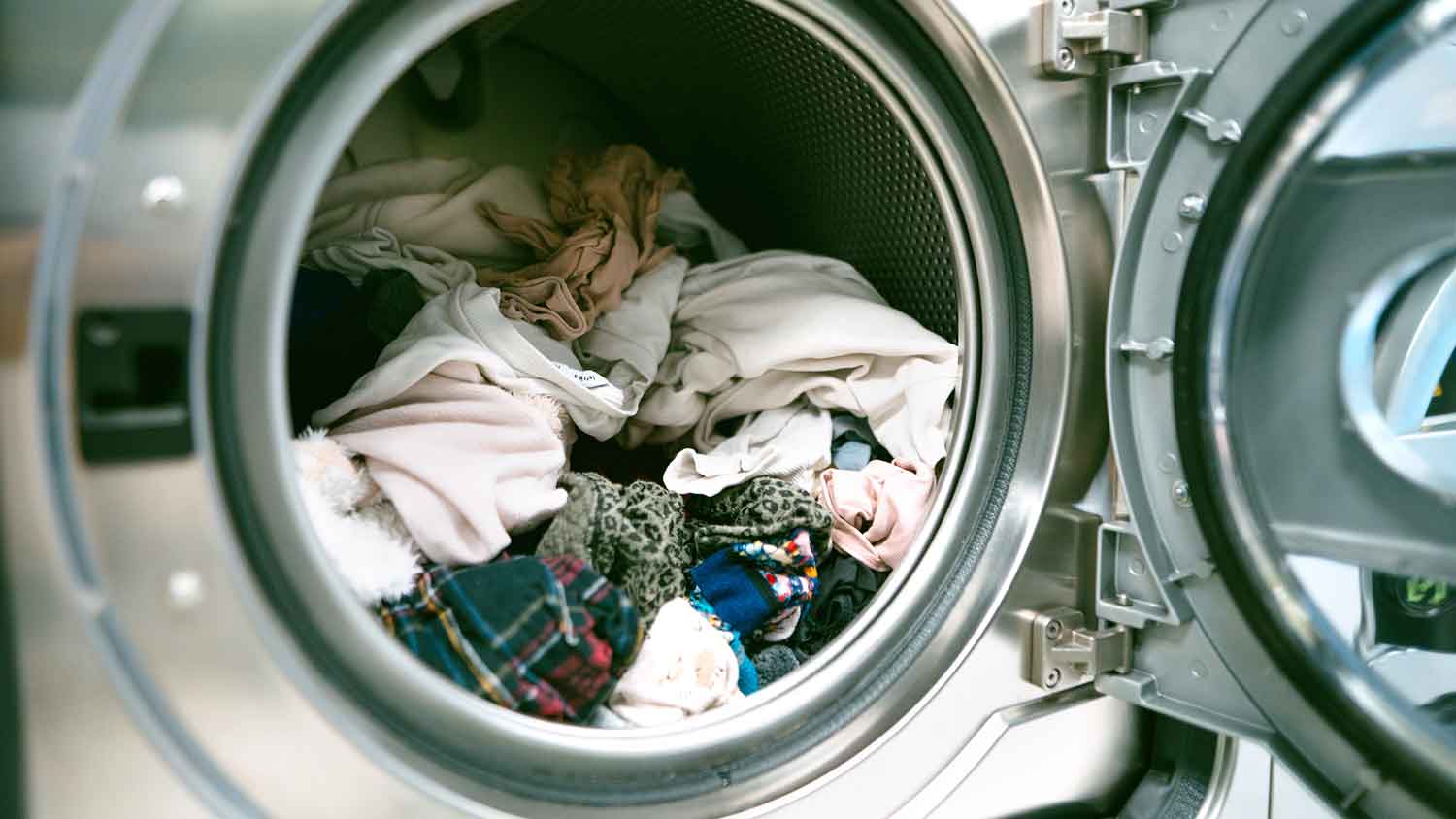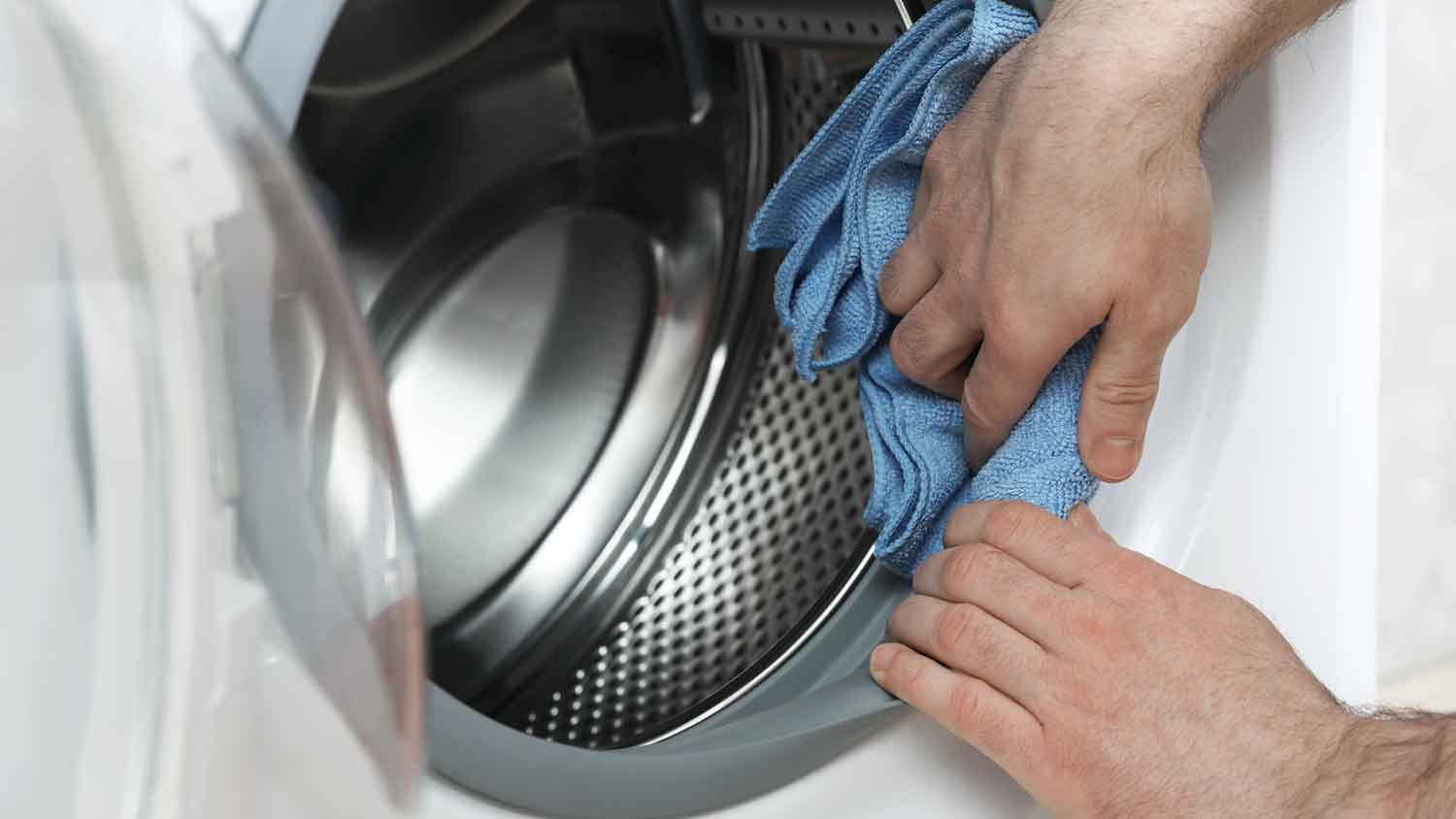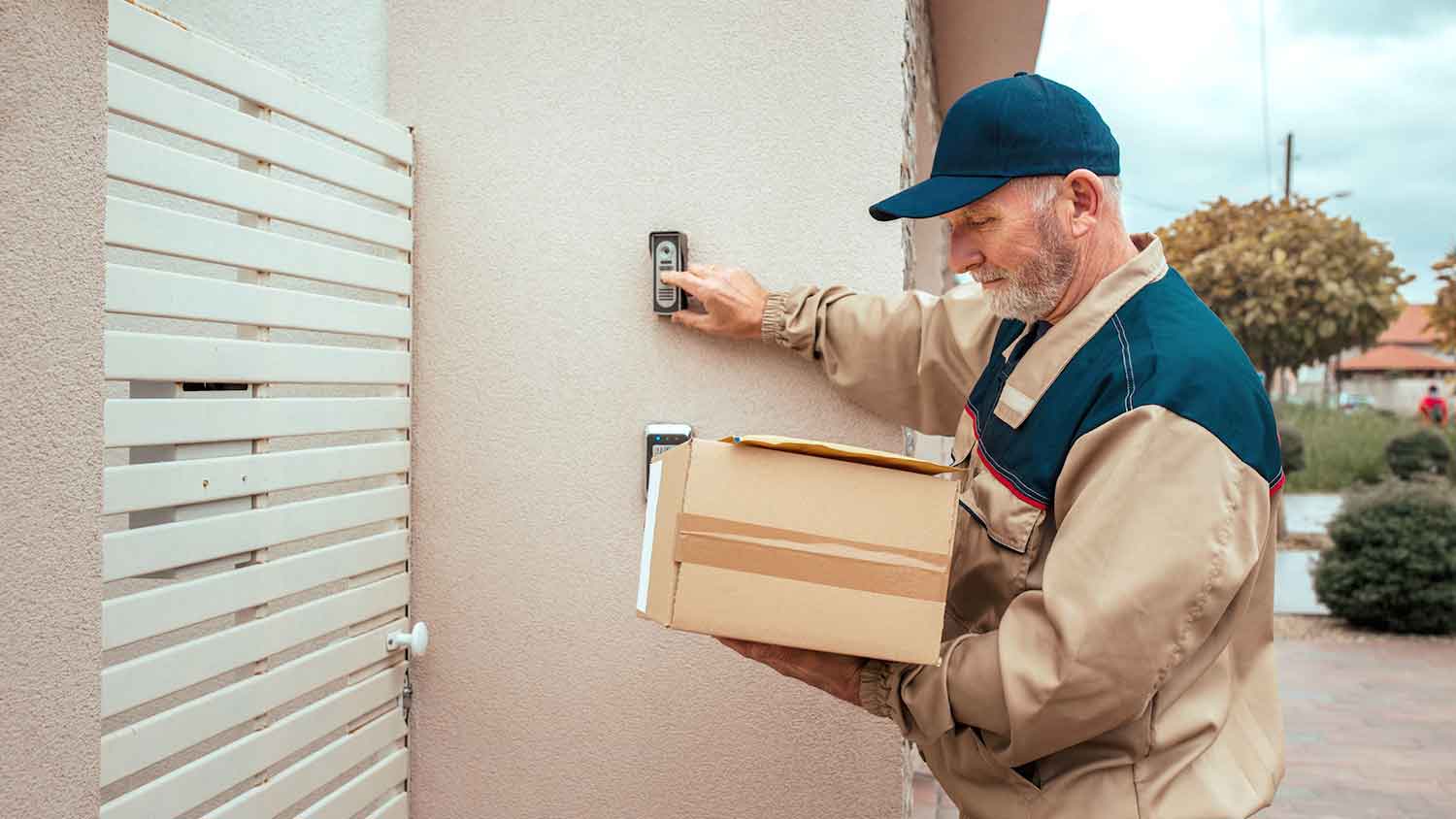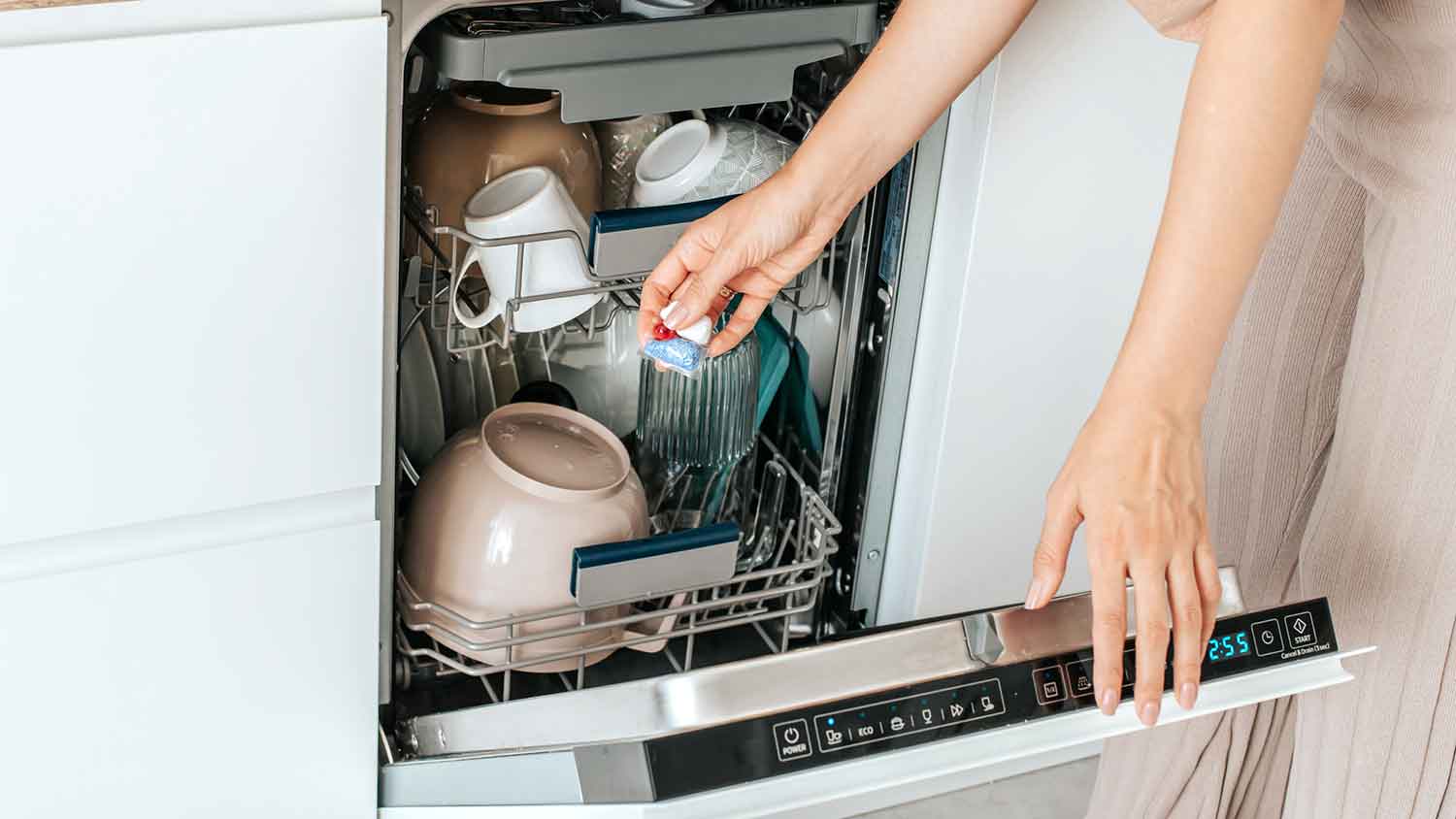
Whether or not the cost of installing a pot filler is worth it depends on your kitchen needs. Learn why the faucet itself is often the least expensive factor.
Find the problem, fix the smell


Lint buildup in the dryer can cause all sorts of issues, including smelly clothes.
Other culprits could be clothes that haven’t dried all the way or odor buildup in the dryer.
Critters taking up residence in the vents can contribute to smelly laundry.
If the clothes were left in the washer for too long, the dryer may not be at fault at all.
There’s nothing quite like pulling fresh, fluffy, warm clothes out of the dryer, but what if the dryer is making your clothes smell bad? There are a few reasons why this could happen, and fortunately, many of them can be fixed with relative ease. In a few cases, the dryer may not even be the culprit. We found five reasons why your dryer is making your clothes stink—read on to find out more.
Checking the lint trap is the easiest place to start the process of diagnosing why your laundry is smelly. A clogged lint trap can lead to many issues, including a dryer that can’t dry clothes completely. Too much lint also stops the air from circulating properly, which can lead to bacteria, mold growth, and, ultimately, smelly laundry. Lint buildup can also occur in the dryer vent on the outside of the home and prevent clothes from drying thoroughly.
Luckily, this is an easy fix and the best place to start the process of elimination when you’re investigating the root cause of smelly laundry. To fix the issue, clean the lint trap and remove any lint buildup from the exterior dryer vent. Lint buildup in the ducts can be harder to remove, so if you need vent-cleaning services, you can call a local dryer repair pro.

You know that distinct musty smell that happens when damp clothes are left too long? That could be the reason your dryer is making your clothes stink. If you don't let the dryer run long enough or if the lint trap is full, the clothes won’t be able to dry all the way. This can also happen if you put the clothes in the dryer and forget to turn it on or if the load was too large to dry thoroughly.
To fix this issue, make sure the clothes are completely dry before removing them from the dryer. You can also check the clothes as you fold them and toss any damp items—often heavier items or certain areas like waistbands—back into the dryer until they’re fully dry. You can also clean the lint trap if the clothes aren’t drying as quickly as they used to.
The vent that allows hot air to escape outside can end up an unwelcome critter’s home. If that unwelcome guest built a nest—or worse, died—in the vent, the smells could be wafting back into the dryer and making the clothes smell.
This one is a job for a pro. Removing wild animals, even dead ones, requires protective gear and an understanding of their behaviors. A local wildlife removal specialist can help catch the critter and clear out its nest. Afterward, you should call a dryer repair pro to clean the ducts and vents to prevent any more bad smells unless the wildlife removal company offers a cleaning service.
A blocked or dirty dryer vent can pose a fire hazard to your home. When lint accumulates in the vent, the heat from your dryer could cause the lint to combust, triggering a spark that can start a fire. That’s why having your dryer vent professionally cleaned every year is so important.
Sometimes, mold or mildew can grow in the dryer, causing the dryer itself to smell bad and transfer that smell to the clean clothes. This can happen if there’s a buildup of lint or the clothes have a buildup of detergent from the washer. Even after you clean out the lint trap and dryer vent, there can be a lingering smell in the dryer itself.
To fix this issue, you’ll need to clean the inside of the dryer. You can use a mixture of vinegar or bleach diluted with water (but don’t mix the bleach and vinegar). Using a clean cloth, wipe out the inside of the machine and leave the dryer door open until it’s thoroughly dry. Wipe it down again with a clean, damp cloth, and let it dry again.

Sometimes, the problems with your dryer actually originate in the washer. If you’ve eliminated all of the above issues and your clothes still smell after coming out of the dryer, it’s time to move to the washer. Problems originating in the washer can include:
Leaving wet clothes in the washer for too long
A buildup of detergent from using too much to wash the clothes
Cleaning the washing machine is the best place to start if the washing machine smells like sewage or is giving off an unpleasant odor. Make sure to get into any crevices, and then run a cycle with hot water, baking soda, and vinegar. If that doesn’t fix it, you should call in a plumber near you to check the drainpipe and the plumbing and see if the odors are coming from there.
An unwanted critter taking up residence in the dryer vent should be handled by a pro. Another issue that means you should call a pro is if the dryer smells like it’s burning. This could be a sign that there’s something wrong with the heating element or the vent system, both of which should be handled by a pro ASAP.
From average costs to expert advice, get all the answers you need to get your job done.

Whether or not the cost of installing a pot filler is worth it depends on your kitchen needs. Learn why the faucet itself is often the least expensive factor.

Broken glass stove tops are not only unsightly; they can also be dangerous. Use this guide to learn how much glass stove top replacements cost based on factors like size and type.

Several factors impact dryer vent installation cost. Use this guide to learn what affects the cost, and how much you should budget for this project.

Repairing or servicing a clothes washer or dryer is common. Knowing the answers to these washer and dryer questions will help you during discussions with a pro.

Don’t miss a delivery because of a wired doorbell that is not working. Whether it is a broken button or faulty wiring, we’re here to help you fix the problem.

Why is your dishwasher pod not dissolving? There are several potential causes, including low water pressure and clogged components. Here’s how to figure it out.